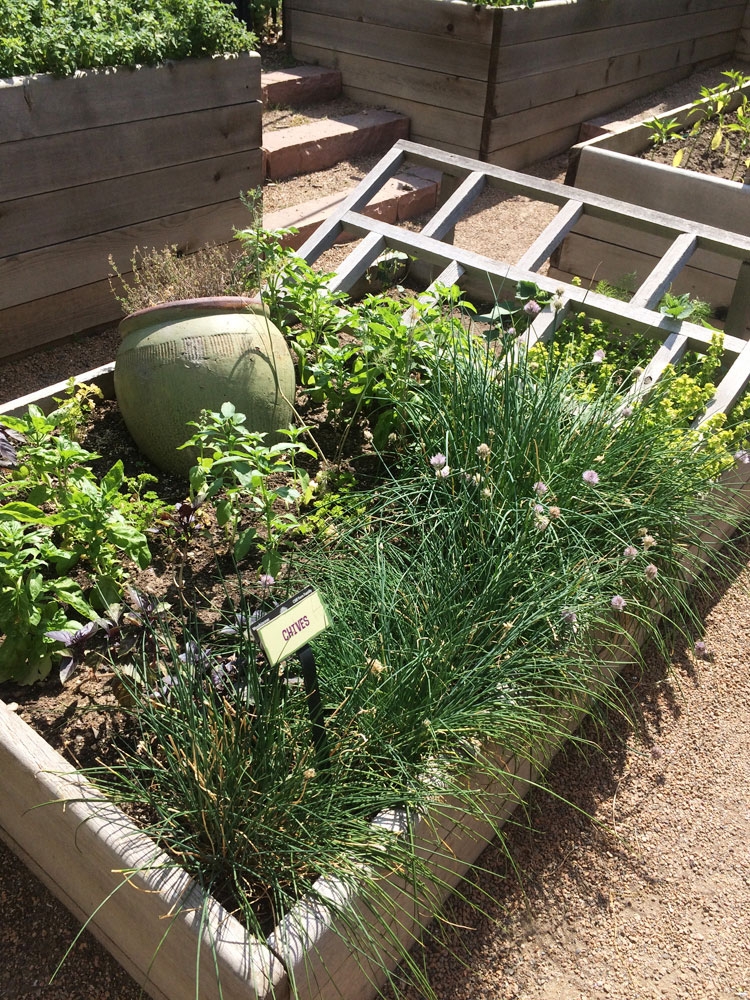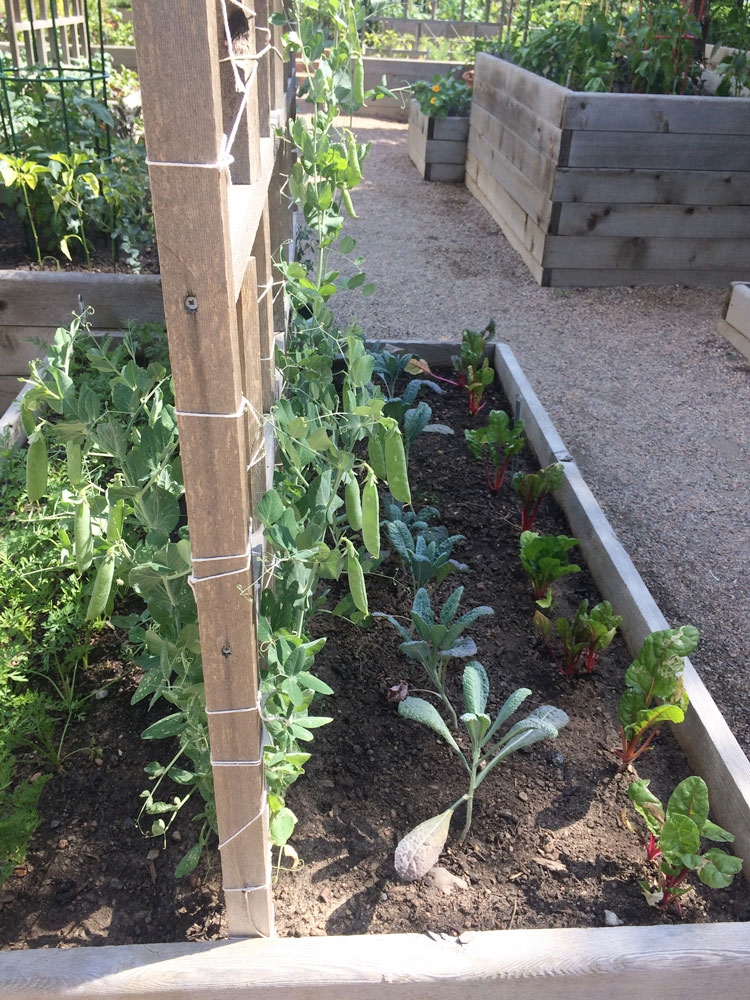Producing Food in our Food Programs
Here at Denver Botanic Gardens there are several different gardens whose purpose is one that many don’t associate with the Gardens: producing food. The Gardens grows produce for a variety of purposes, but eventually this food will get donated to great organizations like S.A.M.E. Café or even used here in The Hive Café. The donations are given from:
- Le Potager garden
- The Home Harvest Garden in the Mordecai Children’s Garden (which is an amazing educational experience in itself)
- The Mariposa Urban Farm, located in a newly renovated part of town near Mariposa Street and 11th Avenue
In all the produce gardens, especially the ones located at Denver Botanic Gardens, their purpose is not simply to grow food efficiently to donate it, but to make a public example while doing it. The garden Le Potager is named very specifically and is French for “the kitchen garden.” This has a different meaning than La Potager, meaning “the vegetable garden.” This adds even more to the significance and purpose to the garden itself, making it an example for those who find the idea of growing their own food and giving them ideas for it to do this.
As one walks through this garden there are examples for gardening in any home situation, from container gardening in an apartment setting to what you can do in a small backyard if only a self-sustaining harvest is needed. This is exemplified by the sectional star, which can be made of many different types of materials, string and stakes, recycled boards, or even more pleasing to the eye, a wicker-like material similar to what is shown in the gallery below. Some people may even do a flower border, filling the insides with harvestable plants. Other ideas in Le Potager include alternatives to trellising and staking your tomatoes and what you can do to easily protect the plants from animals.
The Home Harvest Garden is one that does an excellent job displaying raised beds to help make an easy pros-and-cons list when considering this for a local yard. The ease of access in height for children and the way the vegetables are attention-grabbing and attractively on display are pros when considering them here in the Gardens setting. If a visitor walks through on a future visit, they will notice that the produce sometimes has been rotated out. This is yet another example of a good tip given to the visitors of the Home Harvest Garden, giving them good rotation times for their own vegetable gardens according to the time of the year. For example, what to add when the lettuce season is coming to an end and when peppers may be getting closer to being harvested, even when it is finally safe to start planting tomatoes.
Crop production from the Gardens is not something that many people know about, or that they could come here hoping to get some their questions answered or innovative ideas, however it is a program that deserves to be highlighted! Next time you are on the lookout for different garden ideas, take a stroll through the Gardens and it may give you a great new concept to try out on your own!
About the author: My name is Amanda Williams and my internship title is Urban Ag and Community Development. This year I am spending my summer working as an intern at Denver Botanic Gardens with four other young women. I am originally from South Dakota and I’m loving my time here in Denver. My internship has been an enabler towards enhancing my knowledge about crop plants and public gardens, while opening a door to future opportunities that I am passionate about in the field of horticulture.
Gallery




Add new comment